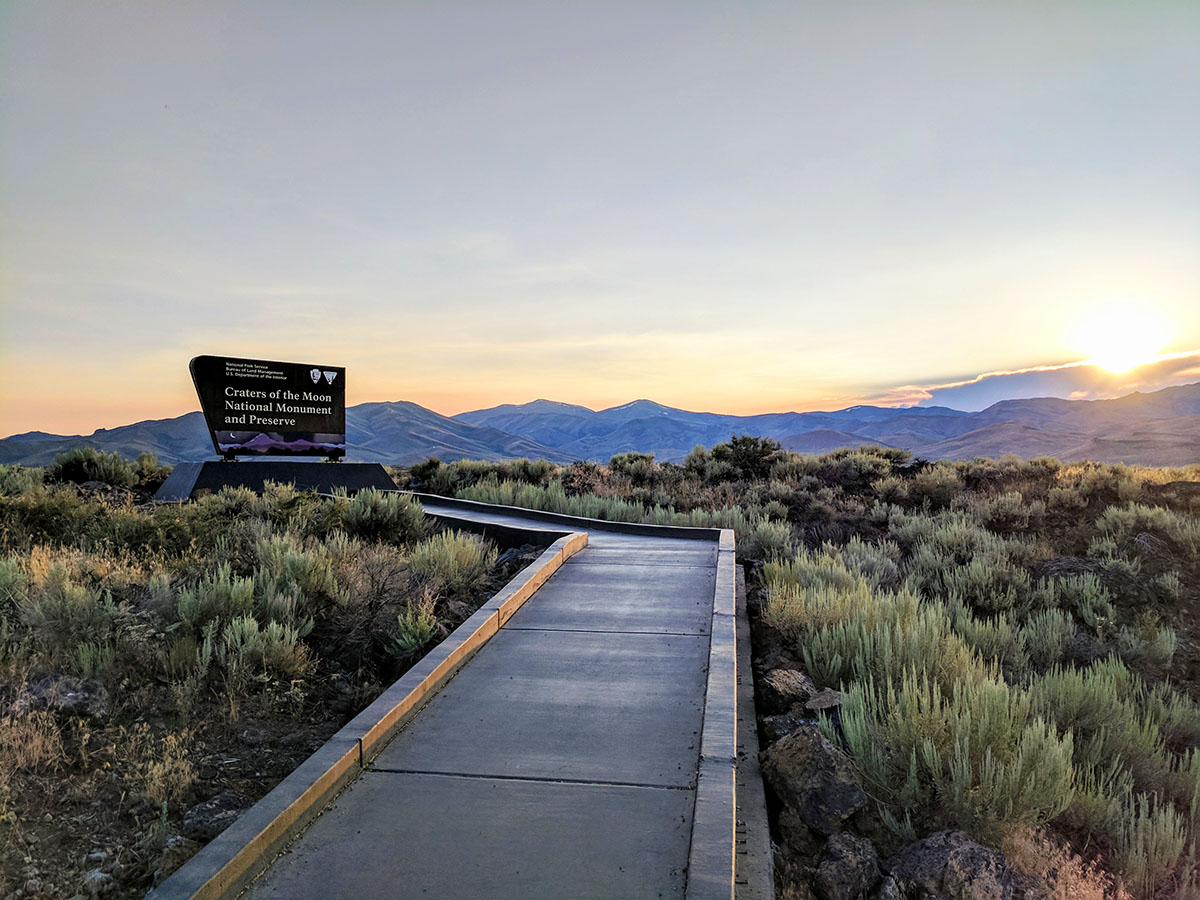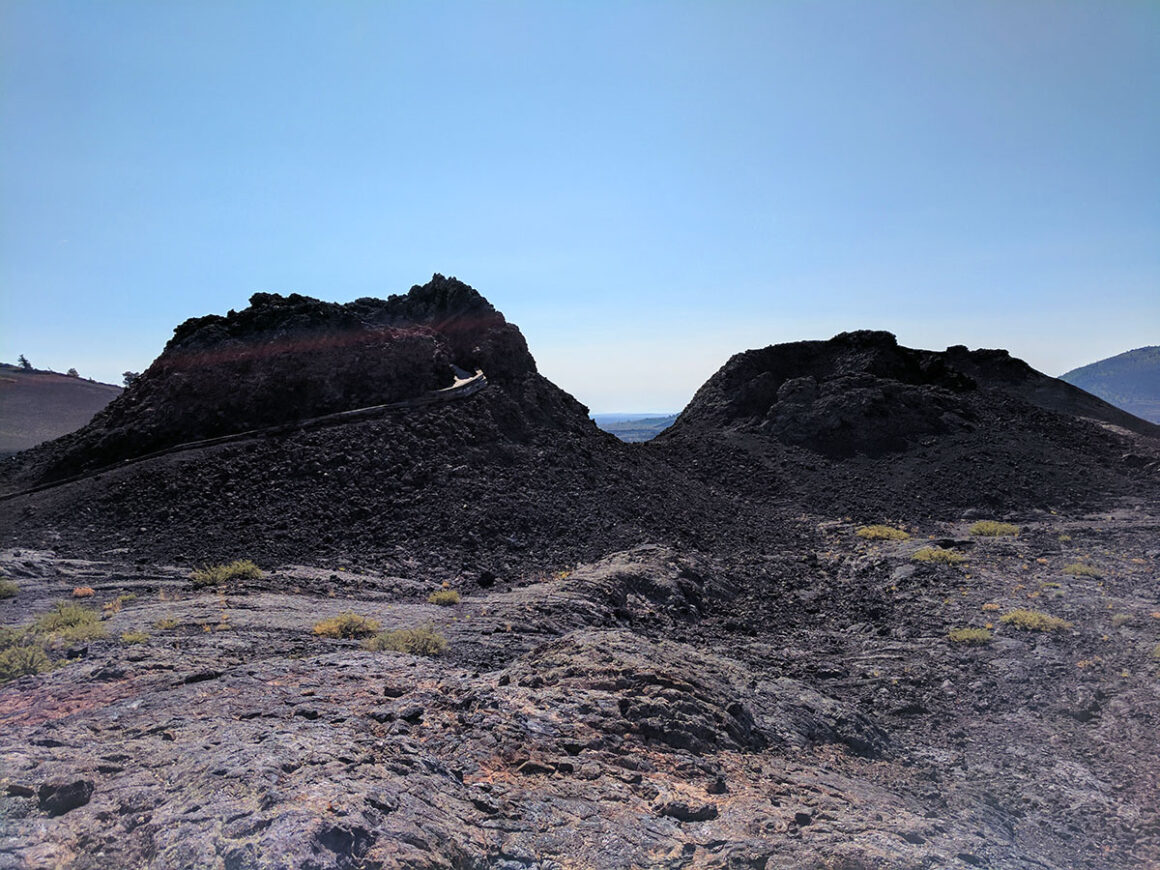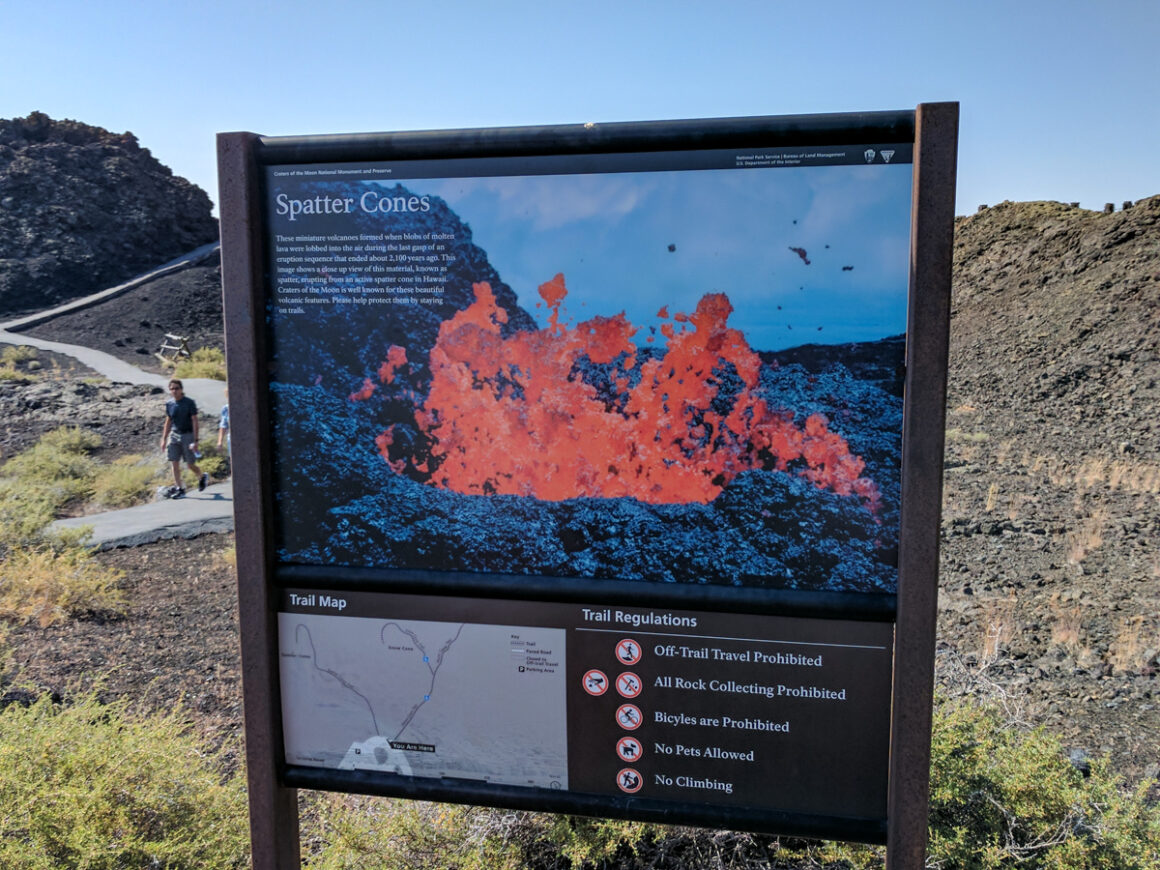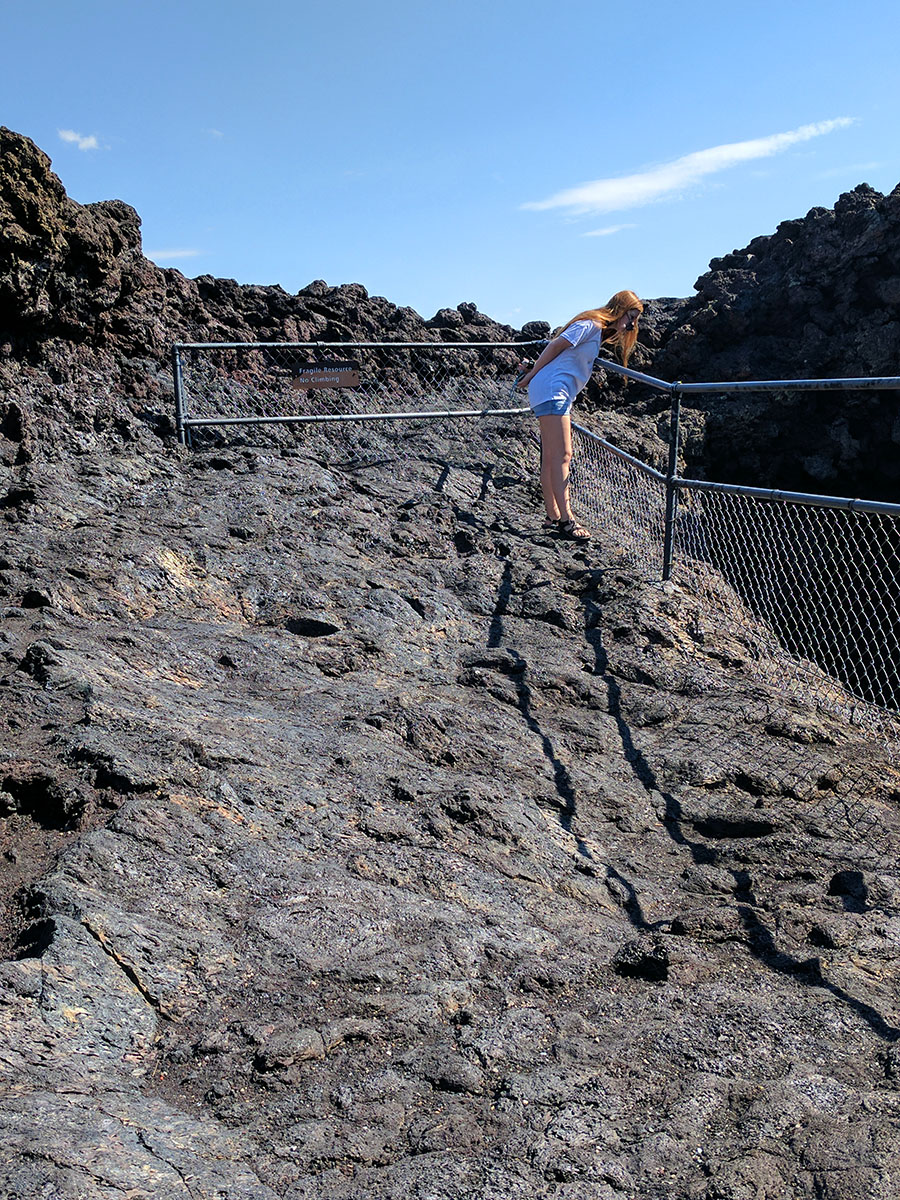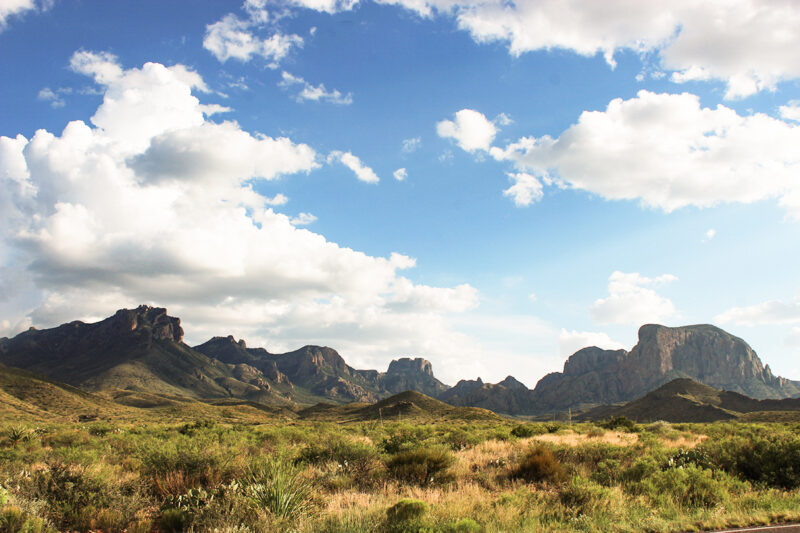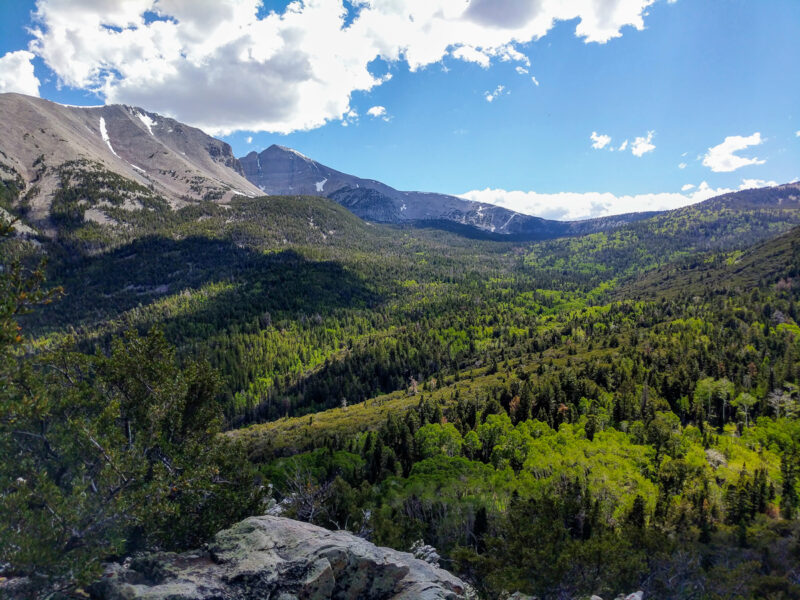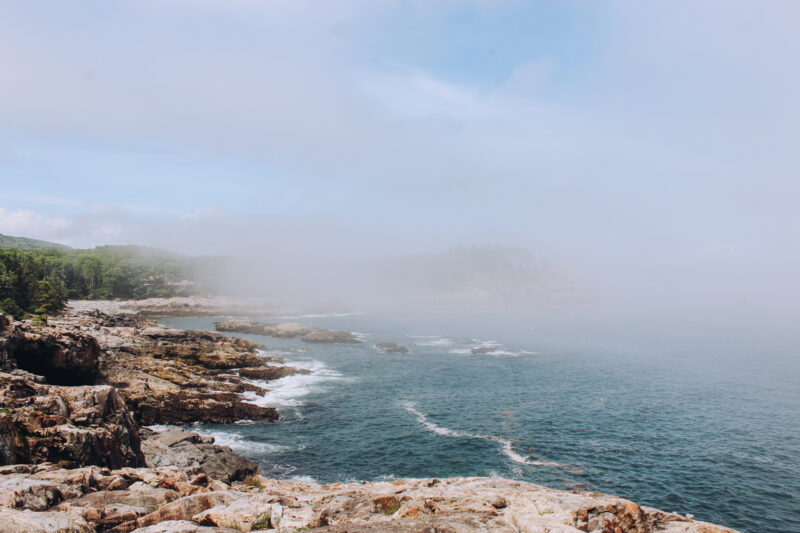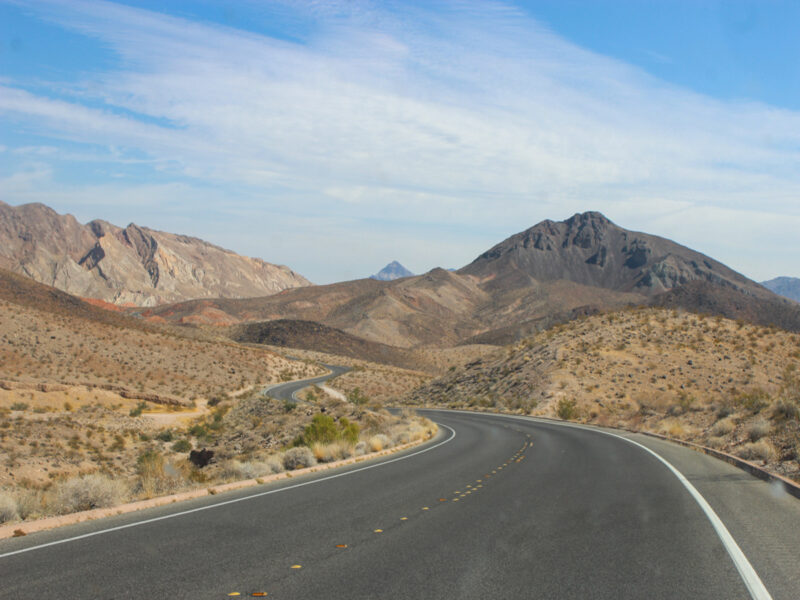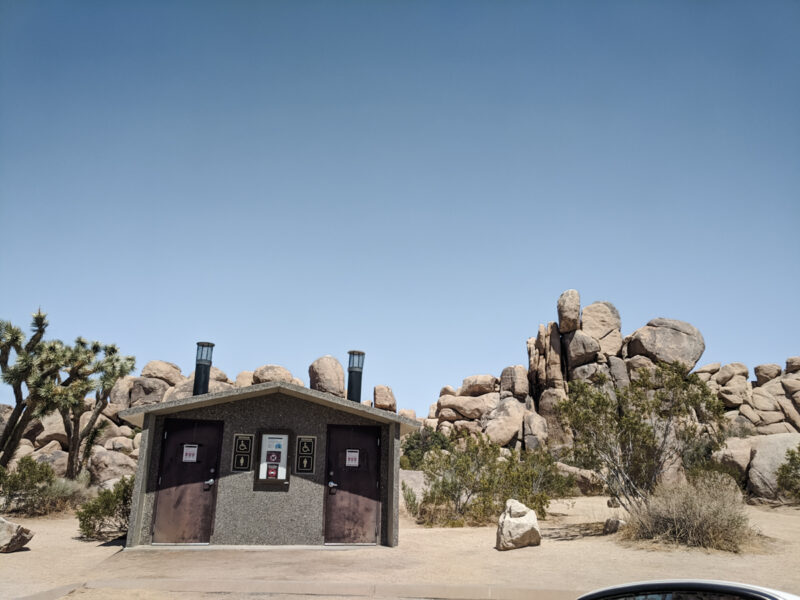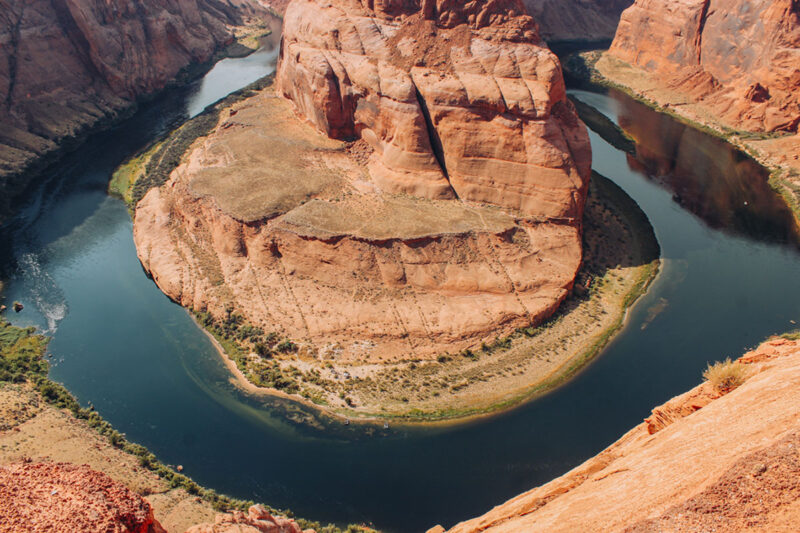How to Visit Idaho’s Craters of the Moon National Monument
For a lesser visited park unit, Craters of the Moon National Monument and Preserve packs quite a punch. In fact, I’ve never seen anything like it. With lava flows as far as the eye can see and cinder cones scattered throughout the landscape, it feels strange and surreal, and not of this world.
From the moment we arrived from Montana, on a Georgia to Glacier National Park road trip, just in time to witness a gorgeous sunset, we felt like we were on a different planet. The black lava glowing in the sunset provided an ethereal beauty and despite the long drive that day, we knew that visiting Craters of the Moon was definitely worth it.
This post contains affiliate links. That means that I may earn a commission if you book or buy something through a link I provide. This keep Southerner Says online and on the road. Thank you for your support.
What’s So Special About Craters of the Moon?
Formed From Volcanic Activity – Craters of the Moon National Monument lies on what scientists call the Great Rift, a 52 mile-long chain of deep cracks in the earth. When underground volcanoes erupted, lava popped and burst its way to the surface through the cracks. Depending on whether it happened fast or slow is what created the variety of shapes and colors in the park.
It’s a National Monument and Preserve – Craters of the Moon was originally named a national monument in 1924 by President Calvin Coolidge. Since then, the park has expanded a couple of times. In 2000, 410,000 acres were added and then declared a national preserve by President Clinton so the offficial name is Craters of the Moon National Monument and Preserve.
Astronauts Trained at Craters of the Moon – We weren’t just dreaming about that otherworldly feeling. The landscape at Craters is so out of this world and similar to something in space, the Apollo 14 astronauts visited Craters in 1969 during their training before the lunar landing.
It’s an International Dark Sky Park – Craters of the Moon is far enough away from major cities that in 2017, it was designated as an International Dark Sky Park. Dark Sky parks are some of the darkest places in the country. Even nearby communities cooperate in keeping light pollution to a minimum by installing special lights bulbs that minimize glare.
Where is Craters of the Moon National Monument?
Craters of the Moon is located in a remote area of southern Idaho. Getting there isn’t the easiest but if you have the time, it offers an stunning drive through Idaho’s Snake River Plain. The park’s one entrance is located directly off of U.S. Hwy 20/26/93, 18 miles from the tiny town of Arco, Idaho. Here are the distances to other nearby cities:
- Sun Valley – 70 miles
- Idaho Falls – 90 miles
- Twin Falls – 94 miles
- Boise – 174 miles
- Jackson, Wyoming – 179 miles
Things To Do at Craters of the Moon
Craters of the Moon National Monument is a fairly large national park, however, the parts of the park that are accessible without a backcountry permit are fairly close together. Here’s a few things to do while visiting Craters of the Moon National Monument.
The Robert Limbert Visitor Center. Pick up a park map, chat with rangers or educate yourself about the park including watching the park movie. And of course, you can stamp your national park passport or enroll in Junior Ranger activities. Even though the park is open (weather permitting) year-round, the visitor center may not be. Check the park’s website for the correct hours.
Travelers with a limited schedule should at least make time to drive Park Loop Road, the scenic 7 mile touring road through the park. There are pullouts and stops for viewing the bizarre landscape and geological features. To enhance your visit, download the National Park Service’s app on your phone for suggestions about what to do in the park
Inferno Cone is a must-do when visiting Craters of the Moon. How often do you get to hike up a cinder cone? The mile out and back trail, with 500 ft. gain, offers amazing panoramic views of the surrounding area. Also surprising is the greenery and a few trees on top. It’s definitely a must-see in the park.
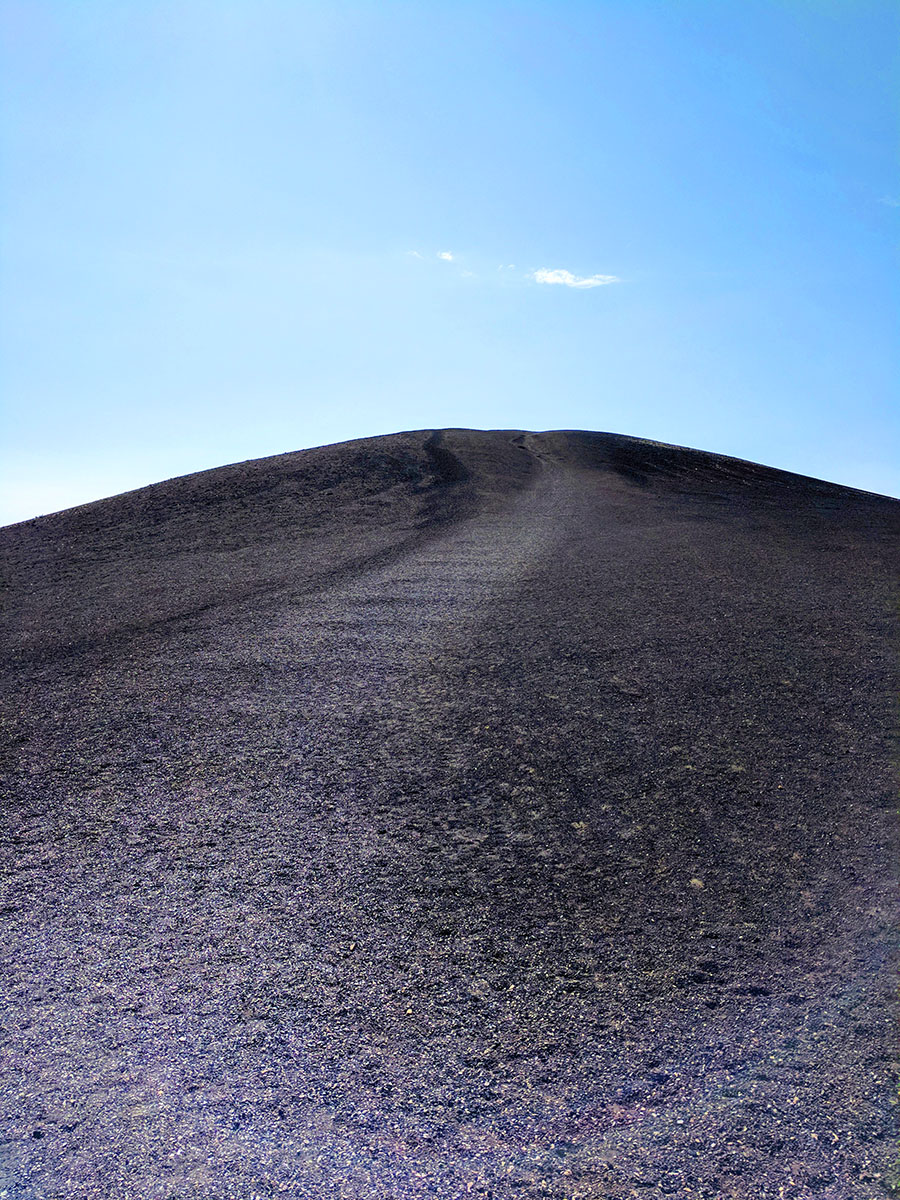
Snow Cone Trail is an easy wheel chair accessible and kid friendly walk to a couple of splatter cones that were formed when blobs of molten lava were tossed into the air with force at the end of an eruption. The lava then formed what looks like miniature volcanoes. At the top of the cones is an area where you can look down into the center of the cone.
Craters of the Moon National Monument is also known for it’s underground cave system and lava tubes. These below the surface wonders can be explored on your own but does require a permit and a quick shoe test for White Nose Syndrome (an illness that affects bats) before going in the caves. I personally didn’t have a chance to explore the caves but my friend Dawn did. You can read about her experience here.
Where to Stay in Craters of the Moon
Since Crater of the Moon is so remote, staying in the park, or as close as you possibly can, is recommended and much more convenient. Plus, the park campground is very unique with sites directly on the lava field.
Camping Inside the Park
Crater’s Lava Flow Campground offers 42 campsites on a first come, first served basis, which means the campground doesn’t accept advance reservations. I know not having firm plans can be a bit off-putting to some people but if you can snag a site, you’ll love sleeping among the lava.
The campground is generally open mid-April through November and the fee per campsite is $15 USD. If water isn’t available, as sometimes happens in low season, then the fee is only $8. Just be aware that the campground doesn’t accept cash but has an automated machine for credit card payments.
Every campsite has a grill, a picnic table and a flat area for a tent. There are a few RV sites but there are no hook ups or dump stations. Water in available in the campground but the park service asks RVers to please not fill their tanks.
Southerner Says: There isn’t a park store so if you plan on cooking at your campsite, it’s best to bring the supplies with you. There’s a small grocery store in Arco but if you need to stock up, it’s better to stop in one of the larger nearby cities like Idaho Falls.
Camping Outside the Park
If you can’t get a spot in the park, KOA Campgrounds has a property on the main highway. KOA’s are good options and have clean sites and nice amenities. Another campground in Arco is Mountain View RV Park and Restaurant. Unfortunately, I don’t know anything about it other than it has a 4.2 rating on Google.
When I was researching the area and looking for camping near Craters of the Moon, I came across a place called Honey’s Park. From what I can tell, it’s a vacant lot the owner allows people to park and camp on for free. Here’s the link to the website to contact him but it appears he doesn’t accept advance reservations.

Hotels in Arco
For those that prefer a bed and a room, there are a couple of basic hotels in Arco and VRBO’s and in the area as well. We didn’t spend much time in town other than to eat a delicious breakfast at Pickle’s Place before we headed east, but the town itself has a interesting history as the first place in the world ever to have electricity generated by nuclear power. And there’s a museum you can visit about that in Arco too.
When is the Best Time to Visit Craters of the Moon National Monument?
Craters of the Moon is open every day, year round, but since the park is at a fairly high elevation of 5900 feet, the weather can be extreme. The best time to visit is spring and fall when it’s cooler. Summer is very hot. Especially with the black lava absorbing the heat and making it even hotter.
We visited in June and it was hot. Hot enough that strenuous hiking was out of the question. Once the sun went down, it was cool and the perfect sleeping weather. We even left the fly off our tent so we could see the stars.
Winter usually means snow. November through mid-April the the scenic loop road is closed but you can still access and explore the park on foot and with snowshoes. I would love to see this area with a dusting of snow.
Craters of the Moon FAQs
Does it Cost to to Get Into Craters of the Moon?
Yes. The entrance fee for Craters of the Moon is $20 per car and $15 per motorcycle and there’s no fee to drive the park road, if it’s open, in winter. You might consider investing in an America the Beautiful park pass that saves money at over 2k interagency park sites.
How Much Time Do You Need at Craters of the Moon?
You can drive the park road and see most features in a day but to thoroughly enjoy the park and the night sky, try to spend the night or at least sunset at the park. It really is magically. I also think you could stay up to three days and have plenty do see and do.
Will I Have Cell Service in Craters of the Moon?
Probably not. I have Verizon and my daughter has AT&T and neither of us had really good reception in this area.
Are Dogs Allowed in Craters of the Moon?
Dogs are allowed in the park on roads, the campground and parking areas but not on any trails or the visitor center. If you do have pets with you when you visit the park. the National Park Service reminds you to clean up after your pets and dispose of waste properly. And don’t leave them in the car in the heat.
Where to Go After Visiting Craters of the Moon?
Because Craters of the Moon National Monument is fairly remoted, there isn’t too much to do in the immediate area but there are a few other public land sites within a couple of hours. Hagerman Fossil Beds and City of Rocks National Reserve are two of the closest parks. Also, popular Shoshone Falls in Idaho Falls, would be another good add-on to a southern Idaho road trip.
Craters of the Moon could also be included on a Boise to Twin Falls, Idaho road trip or a Boise to Wyoming’s Grand Teton National Park. If you travel from Craters of the Moon National Monument to Grand Teton National Park, make sure to get an early start to take advantage of the beautiful drive. Leaving early in the day, you can easily be in Jackson in time for lunch and explore Jaclson and some of the park the rest of day.
You could also fly into Bozeman or Billings, Montana for a loop itinerary that includes Yellowstone National Park, Grand Teton National Park and possibly even Glacier National Park or, if you make a slight detour, add Craters to a Salt Lake City, Utah to Jackson and Grand Teton road trip.
More Craters of the Moon National Monument Tips
- Access the National Park Service’s map of Craters or the Moon.
- Purchase your America the Beautiful park pass at REI.com before visiting Craters of the Moon.
- Pick up a Moon Handbook, my favorite guidebooks, for more information about visiting Idaho.
- Learn more about the 7 Leave No Trace principles for the hiking and exploring public lands.
Final Thoughts About Visiting Craters of the Moon
You might be tempted to pass up Craters of the Moon because of its remoteness, but don’t. It requires a bit of effort but it’s so worth it I promise.
See you on the road!


